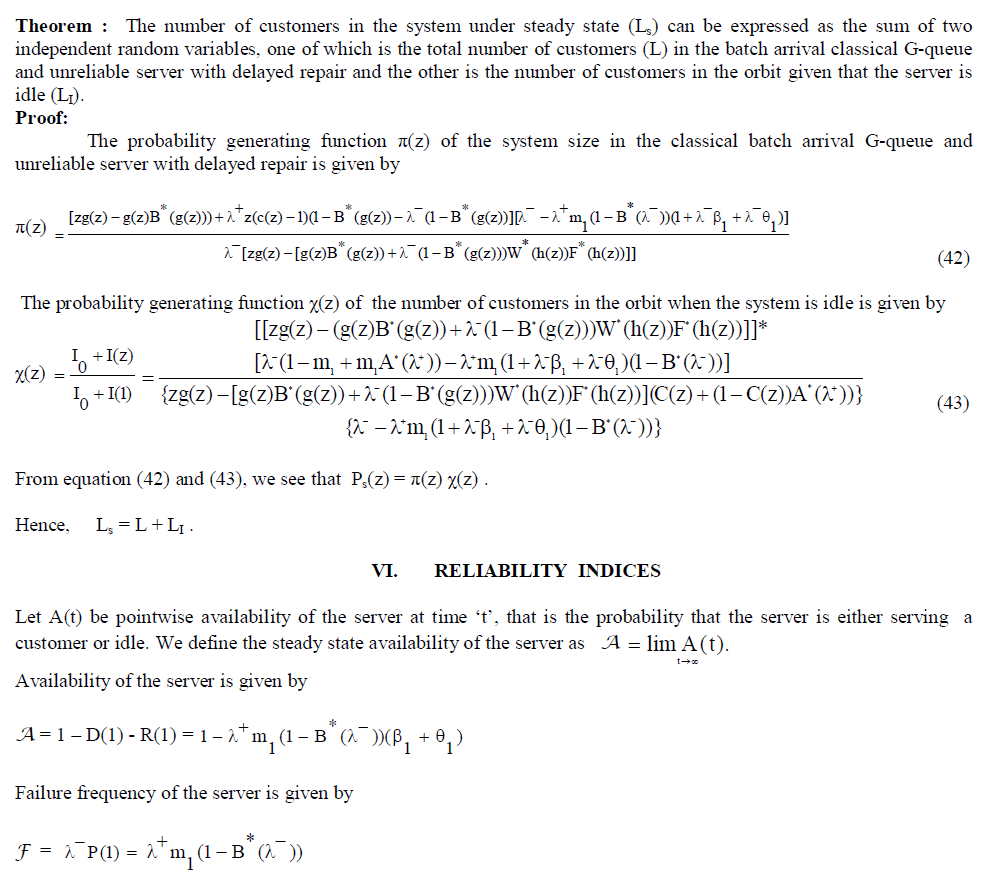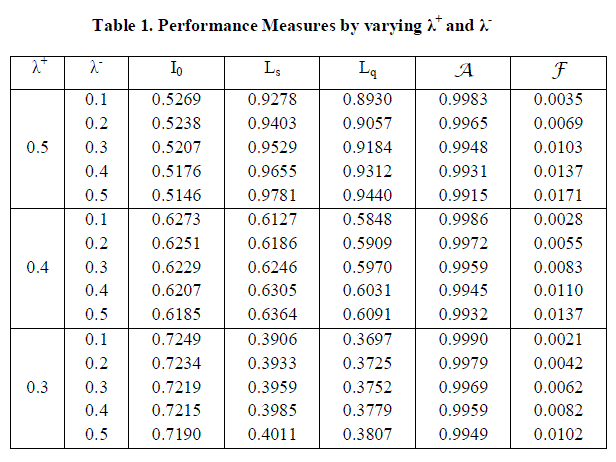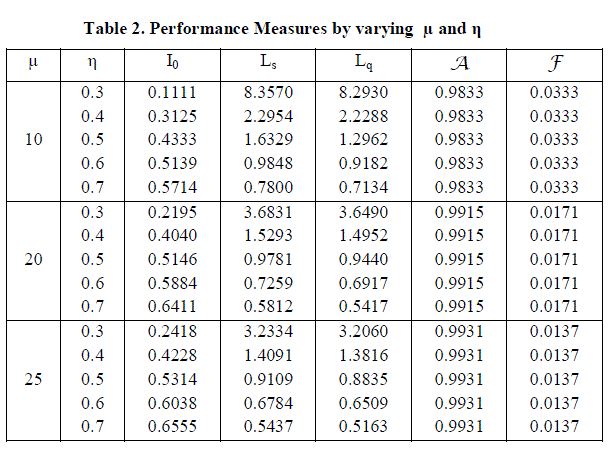ISSN ONLINE(2319-8753)PRINT(2347-6710)
ISSN ONLINE(2319-8753)PRINT(2347-6710)
K. Kirupa1 and Dr. K. Udaya Chandrika2
|
| Related article at Pubmed, Scholar Google |
Visit for more related articles at International Journal of Innovative Research in Science, Engineering and Technology
Single server batch arrival retrial G-queue and an unreliable server with delayed repair are analyzed. Positive customers arrive in batches according to Poisson processes. If the server is idle, one of the positive customers in the batch enters for service while the rest join the orbit. Otherwise all the customers enter the orbit. Arrival of negative customer removes the positive customer being in service from the system and causes the server breakdown. The repair of the failed server starts after a random amount of time known as delay time. Expected system size, orbit size, availability and failure frequency of the server are derived. Stochastic decomposition law is verified. Numerical examples are presented to illustrate the influence of the parameters on several performance characteristics.
Keywords |
| Retrial queue, G-queue, server breakdown, delayed repair and stochastic decomposition. |
INTRODUCTION |
| Queueing systems with repeated attempts are characterized by the fact that a customer finding all the servers busy upon arrival must leave the service area and repeat his request for service after some random time. Between trials, the blocked customers join a pool of unsatisfied customers called ‘orbit’. The retrial queueing system has been studied extensively due to its wide applicability in telephone switching system, telecommunication and computer networks. Recent works on retrial queue includes Aissani [1], Arivudainambi and Godhandaraman [2] and Artalejo and Li [3]. |
| During the last decade, there has been an increasing interest in queueing system with negative customers. Queue with negative arrivals, called G-queue was first introduced by Gelenbe [5] with a view to modeling neural networks. Arrival of a negative customer induces positive customers to leave the system immediately. For a comprehensive analysis of queueing systems with negative arrivals, readers may refer to Gelenbe[6-8], Artalejo [4], Wu et.al [9] and Wu et.al [10]. In this paper, an unreliable batch arrival retrial G-queue with delayed repair is discussed. |
MODEL DESCRIPTION |
 |
 |
ANALYSIS OF THE STEADY STATE DISTRIBUTION |
 |
| The system of equilibrium equations governing the model, using supplementary variable technique are given below: |
 |
 |
| The partial probability generating function of orbit size when the server is idle is given by |
 |
| Probability that the server is under repair is given by |
 |
STOCHASTIC DECOMPOSITION |
 |
NUMERICAL RESULTS |
| In this section, we give some numerical results to illustrate the effect of parameters on the performance characteristics. For numerical calculation, we assume that the distributions of service time, retrial time, delay time and repair time follow exponential with rate μ,η,θ and β. |
| The effect of varying arrival rate λ+ and λ- with the fixed values (μ, η, θ, β) = (20, 0.5, 6, 3) on I0-probability that the server is idle in the empty system, Ls-Mean number of customers in the system, Lq -Mean number of customers in the orbit, A -Availability of the server and F - Failure frequency of the server is given in Table (1). From the table, it is clear that increase in λ+ and λ- , increases Ls ,Lq and decreases the other measures. |
| Table (2) provides I0,Ls,Lq, A and F by varying the values of μ and η for arbitrary values (λ+, λ-, θ, β)=(0.5, 0.5, 6, 3). Here, the table reveals that as μ and η increase, I0 increases, Ls and Lq decreases. As μ increase, A increases and F decreases. |
| Table (3) shows that the effect of varying θ and β with the fixed values (λ+, λ- , μ, η)=(0.5, 0.5, 20, 0.5) on the performance measures. From this table we observe that increase in β and θ, increases I0 and A, decreases Ls and Lq and has no effect on F. |
 |
 |
References |
|